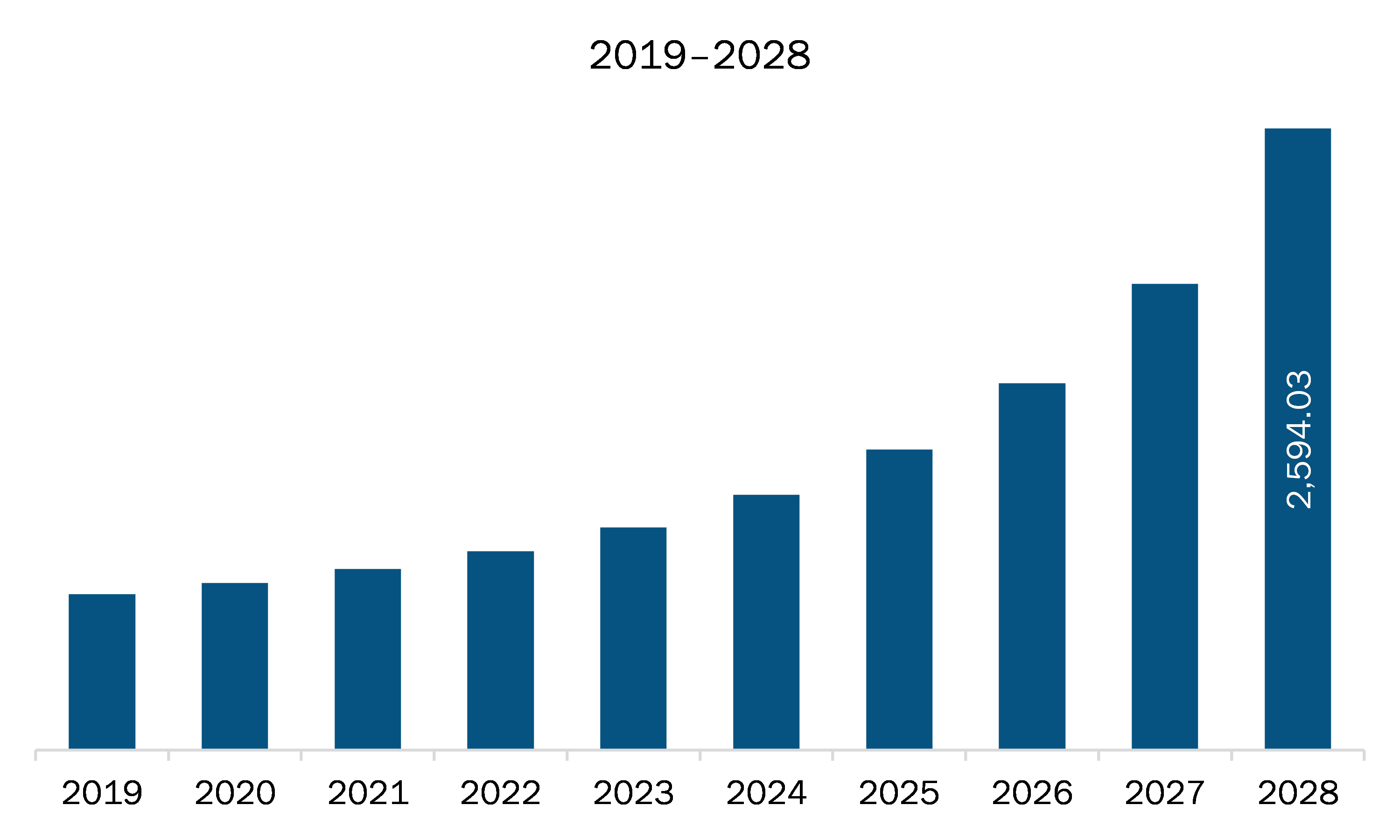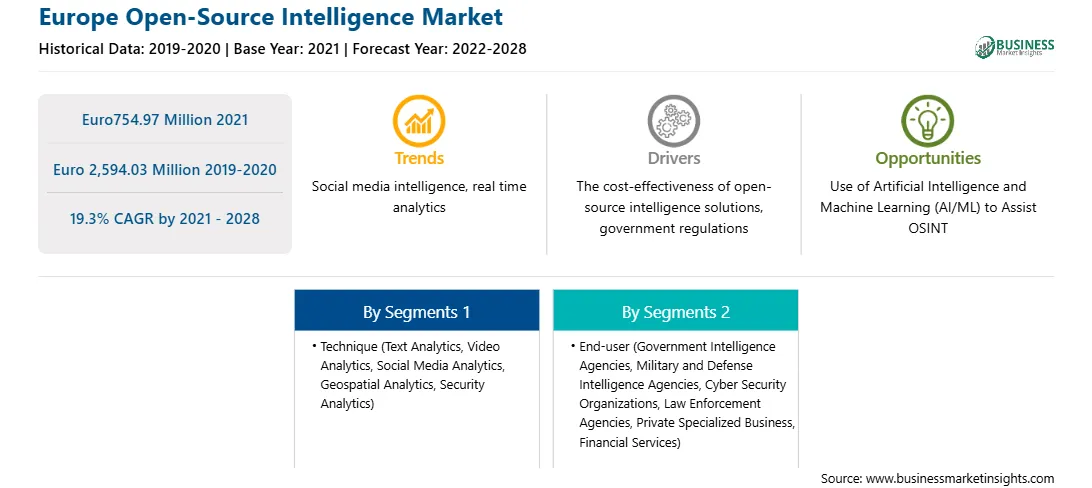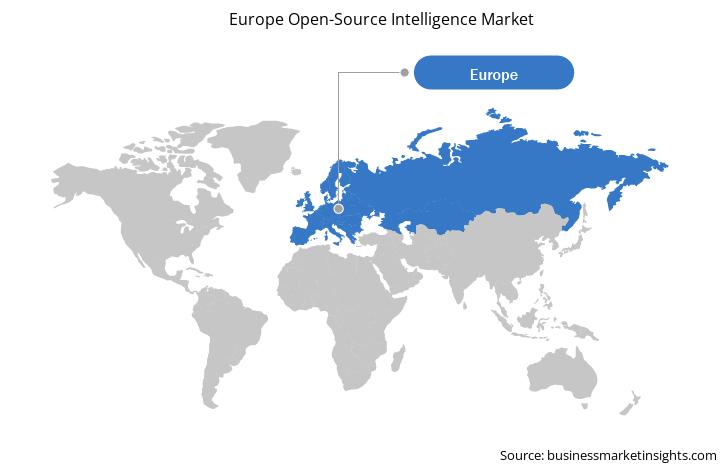Industries across Europe are increasingly adopting digitalization to maximize their capabilities, which is leading to the high adoption of intelligence solutions by them to secure their data. According to studies, the rate of digitalization across Europe stood at 77% in November 2020. With the growing adoption of digitalization across all industries in the region, the demand for open-source intelligence solutions is also increasing. The European Union has set up an organization that sets stringent rules and regulations to protect data called the General Data Protection Regulation (EU GDPR). The organization sets advanced security analytics plans for all companies operating in Europe. Failure to comply with the EU GDPR can result in significant fines of up to 4% of an organization's global revenue. A requirement to notify EU authorities within 72 hours of a breach and a mandate to be able to demonstrate that the organization's security policy is state-of-the-art (SOTA). Thus, the stringent regulation laid down by the GDPR is propelling the adoption of open-source intelligence solutions across the region.
In case of COVID-19, Europe is highly affected specially France. In Europe, the COVID-19 pandemic has a different impact on different countries, as only selective countries have witnessed the rise in the number of cases and subsequently attracted strict, as well as prolonged, lockdown periods or social isolation norms. However, Western European countries such as Germany, France, Russia, and the UK have seen a comparatively modest decrease in their growth activities because of the robust healthcare systems. The sudden outbreak of the COVID-19 pandemic across the region has not only led to the standstill of business operations but have also led to the closure of several small and medium enterprises across the region. In the initial three to four months of 2020, the region has experienced a dip in technological investments across the country. However, the region rapidly adopted remote working culture thereby utilizing digital platform for business operations. The rapid shift in a complete digital phase accounted to data security issues across the organizations in the European region. For instance, in December 2020, an unspecified number of Spotify (Headquartered in Sweden) members had their passwords changed as a result of a software flaw that exposed account information to the public. Similarly, in July 2020, an unprotected server exposed the personal information of 60,000 users of Ancestry.com, a family history search software company. Thus, the increase in the data breaching cases have influenced the adoption of open-source intelligence solutions. Thereby positively impacting the growth of the market.

Strategic insights for the Europe Open-Source Intelligence provides data-driven analysis of the industry landscape, including current trends, key players, and regional nuances. These insights offer actionable recommendations, enabling readers to differentiate themselves from competitors by identifying untapped segments or developing unique value propositions. Leveraging data analytics, these insights help industry players anticipate the market shifts, whether investors, manufacturers, or other stakeholders. A future-oriented perspective is essential, helping stakeholders anticipate market shifts and position themselves for long-term success in this dynamic region. Ultimately, effective strategic insights empower readers to make informed decisions that drive profitability and achieve their business objectives within the market.

| Report Attribute | Details |
|---|---|
| Market size in 2021 | Euro754.97 Million |
| Market Size by 2028 | Euro 2,594.03 Million |
| CAGR (2021 - 2028) | 19.3% |
| Historical Data | 2019-2020 |
| Forecast period | 2022-2028 |
| Segments Covered |
By Technique
|
| Regions and Countries Covered | Europe
|
| Market leaders and key company profiles |
|
The geographic scope of the Europe Open-Source Intelligence refers to the specific areas in which a business operates and competes. Understanding local distinctions, such as diverse consumer preferences (e.g., demand for specific plug types or battery backup durations), varying economic conditions, and regulatory environments, is crucial for tailoring strategies to specific markets. Businesses can expand their reach by identifying underserved areas or adapting their offerings to meet local demands. A clear market focus allows for more effective resource allocation, targeted marketing campaigns, and better positioning against local competitors, ultimately driving growth in those targeted areas.

The Europe open-source intelligence market is expected to grow from Euro754.97 million in 2021 to Euro 2,594.03 million by 2028; it is estimated to grow at a CAGR of 19.3% from 2021 to 2028. Escalating adoption of OSINT for social media analytics is expected to surge the market growth in coming years. Over a few years, social media has gained momentum across the region. More than 80% of the population has at least one social media account. Apart from using social media account for communication, individuals are using it for earning. Social media has also become a marketing platform for both individuals and businesses. Social media networks provide several options for internet investigations because a large amount of important information is available at one location. For example, any personal information can be obtained from anywhere across the region by checking a person's Facebook profile. The information gathered from social media websites is referred to as social media intelligence (SOCMINT), which is a subbranch of open-source intelligence (OSINT). Social media platforms can have both public posts and private posts. Without the creator's consent, private information—such as materials shared with friend circles—cannot be accessed. However, with the rise in the use of social media, content and data theft have also experienced a surge over the years. Therefore, the adoption of social media intelligence is increasing across businesses to protect every data published on their social media pages. Thus, the above-mentioned factors are expected to fuel the growth of the Europe open-source intelligence market in the future.
In terms of technique, the security analytics segment accounted for the largest share of the Europe open-source intelligence market in 2020. In terms of end-user, the cyber security organizations segment held a larger market share of the Europe open-source intelligence market in 2020.
A few major primary and secondary sources referred to for preparing this report on the Europe open-source intelligence market are company websites, annual reports, financial reports, national government documents, and statistical database, among others. Major companies listed in the report are Alfresco Software, Inc.; Digital Clues; EXPERT SYSTEM S.P.A.; Google LLC; IPS S.p.A.; Maltego Technologies.; Palantir Technologies; RECORDED FUTURE, INC.; and Thales Group.
The Europe Open-Source Intelligence Market is valued at Euro754.97 Million in 2021, it is projected to reach Euro 2,594.03 Million by 2028.
As per our report Europe Open-Source Intelligence Market, the market size is valued at Euro754.97 Million in 2021, projecting it to reach Euro 2,594.03 Million by 2028. This translates to a CAGR of approximately 19.3% during the forecast period.
The Europe Open-Source Intelligence Market report typically cover these key segments-
The historic period, base year, and forecast period can vary slightly depending on the specific market research report. However, for the Europe Open-Source Intelligence Market report:
The Europe Open-Source Intelligence Market is populated by several key players, each contributing to its growth and innovation. Some of the major players include:
The Europe Open-Source Intelligence Market report is valuable for diverse stakeholders, including:
Essentially, anyone involved in or considering involvement in the Europe Open-Source Intelligence Market value chain can benefit from the information contained in a comprehensive market report.